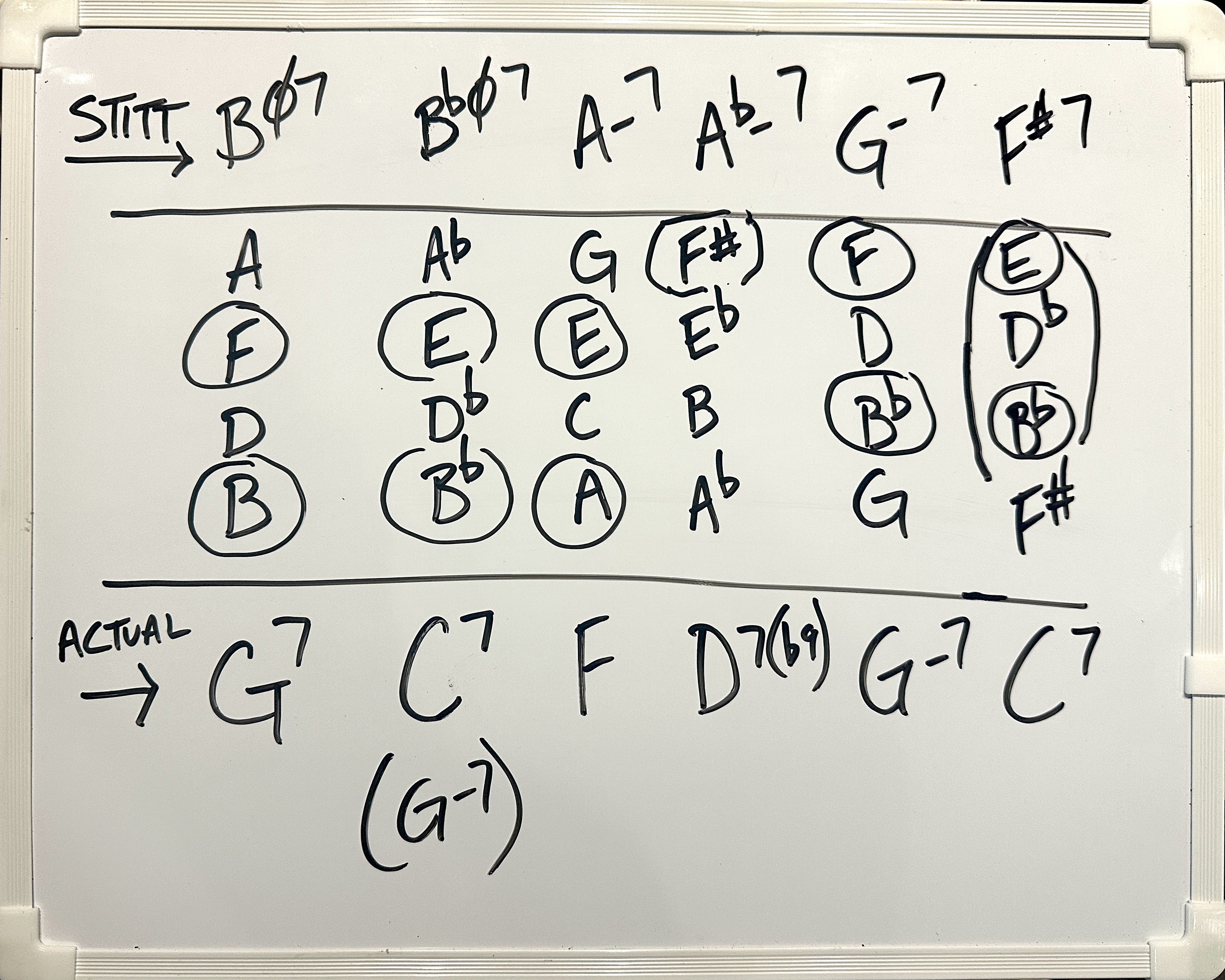Like I mentioned in the first part of the Transcription Challenge prompt, I have plenty to say about this solo! This was the first real jazz solo I ever transcribed. It made a big impact on my entire approach, and I’m still discovering to this day just how much fruit it has to bear.
I cover three stages of my transcription process in this video:
1. Identify and ingest.
Big picture — this is putting a big ’ol lasso around a solo we want to capture and beginning the process of singing along with it.
2. Isolate and imitate.
This is the critical action of zooming in on a phrase — sometimes just part of a phrase — and looping it. Over and over and over and… round and round we go. The more we loop it (and play along), the deeper it goes into our physical memory banks.
3. Integrate and iterate.
It’s not always possible or necessary, but when we’re able to graft ideas from the solo and apply them while practicing that same tune—or another with similar components—we both deepen our understanding of the language we’ve gathered and open the door to our own interpretations and personalizations.
Alliteration is fun.
These stages, repeated often, lay the strongest foundation for assimilating jazz language in a way that gives us the best chance at recalling, adapting, and deploying it as improvisers.
To get you started, here are the snippets I worked through in the video. Each is looped for about a minute. There is a free Chrome Extension called Transpose that allows you to create loops of YouTube videos, but Amazing Slow Downer (what I use) allows you to save any amount of “chunks” you create.
A
B
C
D
E
F
G
H
I
J
K
…skipping ahead…
L – the whiteboard riff

The 7th chords Sonny Stitt is outlining over the song’s turnaround.
Download the files:
![]() This content is for members only.
This content is for members only.
You can find chord changes to Moten Swing at jazzstudies.us
Related Lessons:
Listening Lab: Sonny Stitt on “Soul Shack”
Listening Lab: Sonny Stitt on “I’ll Remember April”
Player Problems (3 of 4): Sonny Stitt, V7b9, and Chromatic Turnarounds